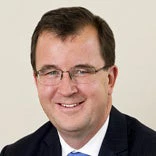
Road safety may not be the first thing that comes to mind when thinking of ending extreme poverty. But poor road safety conditions affect the world’s poorest people the most.
Take the case of Africa. While every other region around the globe registered a decline in road fatality rates between 2010 and 2013, Africa’s rate rose. The continent now has the highest regional fatality rate with 27 deaths for every 100,000 people. Low-income countries’ share of global deaths increased from 12% to 16% during the same period. Yet these nations account for only 1% of total global vehicles.
Pedestrians and cyclists are disproportionately affected by road crashes. In Brazil, for example, motorcycles constitute 26% of vehicles, but account for 52% of all road deaths and an alarming 82% of serious injuries. Many of those affected are young or poor, without other transportation options.
That’s why the World Bank Group and its Global Road Safety Facility partners are committed to working with our client countries to meet the Sustainable Development Goal (SDG) to reduce road traffic fatalities by 50% by 2020. We must scale up action locally, nationally and globally if we are to accelerate road safety progress in the poorest and most affected countries to reduce the devastating impact on the livelihoods of families, not to mention the negative economic impact on the GDP of those countries.
The latest WHO report shows that global road death estimates have plateaued since 2007. But they remain unacceptably high at 1.25 million deaths per year. If we continue on this track, meeting the 2020 SDG target will be a huge challenge. We have to shift from stabilizing to preventing and dramatically reducing road deaths.
A lack of country ownership and resources are just a couple of the reasons why we are not on track. That’s why last week I agreed to serve as chair at the 2nd Global High Level Conference on Road Safety in Brazil where the Brasilia Declaration on Road Safety was adopted.
To make significant progress, governments must commit now to making road safety a priority and start thinking creatively of ways to increase funding domestically. Perhaps the result will be similar to the 2004 Landau report that outlined how to finance development through an international levy on airline tickets!
High-performing road safety countries use dedicated financing schemes, such as fuel taxes, insurance levies, road enforcement collections, and general capital expenditure, to ensure road maintenance and affiliated agencies have the resources they need to reduce fatalities. During last week’s conference, it was clear that innovative financing and strong early involvement by the private sector are critical. Both are cornerstones for FIA’s High Level Panel for Road Safety led by Jean Todt, FIA President and the UN Secretary-General’s Special Envoy for Road Safety that launched Nov. 11.
Programs like the World Bank’s Global Road Safety Facility leverage $43 in road safety commitments for every $1 invested by our donors. The facility’s seed-funding and technical assistance, for example, played a significant role in our road safety lending increase of nearly $239 million in FY15.
These critical donor funds allow countries time to create additional capacity while securing the domestic fiscal space needed to sustain road safety operations. Launched in 2006, the GRSF funding helps clients build strong road safety management strategies, and has initiated and carried out projects in more than 35 developing countries, mobilizing about $850 million in road safety investments.
In addition, all Bank Group road transport projects approved in FY15 included a road safety component. It is our belief that all international institutions that finance road construction or rehabilitation should also include a road safety dimension in their projects.
From setting new seat belt and child restraint safety regulations to better road design, improving road safety is a shared responsibility of both the public and private sectors. By jointly scaling up action, we can positively affect for the benefit of all, but especially for the world’s poorest.


Join the Conversation